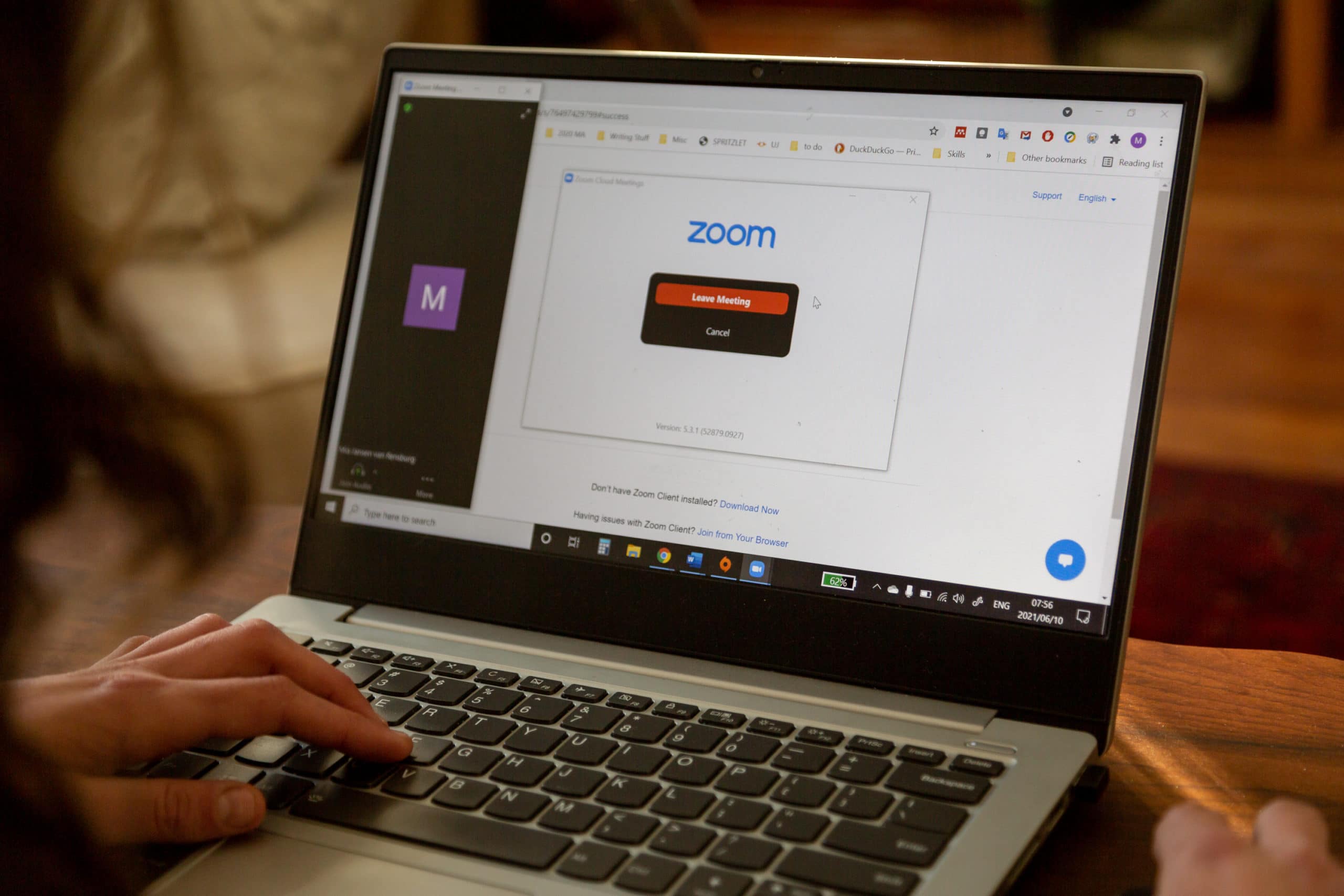Unmuting, raising your hand, chiming in—interruptions are simply awkward on Zoom. Here’s how to effectively—and politely—interrupt someone in a virtual meeting, according to experts.
Allison Shapira doesn’t shy away from using her voice: A self-proclaimed extrovert, the founder of a public speaking training firm and a former opera singer, she’s rarely had trouble knowing how to speak up. But even Shapira makes mistakes when it comes to that nuanced yet high-stakes act of virtual etiquette: Interrupting someone else on a Zoom call.
“It’s inherently rude [to interrupt], and yet sometimes it’s necessary to protect the conversation—or because the internet is spotty,” says Shapira, who recently had to be reminded to use the “raise hand” button when a colleague said she was interrupting too much. In a virtual setting where people are distracted, she says, technology delays reactions and in-person cues are missing. “It’s a human psychology issue,” she says, not just a tech one.
Interrupting co-workers in a meeting has long been a manners minefield, one increasingly laden not only with longstanding office politics and professional ambition but with concerns about gender bias concerns and “that-could-have-been-an-email” meeting glut.
Zoom made this complex act of corporate culture, well, weirder. Chiming in on a conference conversation became toggling between browser windows to find the unmute button. It’s much harder to read a co-worker’s body language across the table. And when “can you hear me?” or “your screen seems to have frozen” are said repeatedly, no one wants to pause meetings more for interruptions.
Loading...
“You wait a minute to be polite and jump in, but they’re not actually done talking yet,” Shapira says, recalling a call last week where she and a client constantly interrupted each other due to frozen screens.
For introverts, it can be even harder to inject themselves in a Zoom discussion than one that takes place in the office. While the pivot to remote work can be easier for introverted employees—interactions are scheduled, and virtual meetings are easier to digest for introverts—speaking up in a Zoom meeting proves harder, says Carey Yazeed, a consultant and behavioral scientist who studies equity in the workplace, because they have to decipher the best time to interrupt.
“Extroverts have big personalities and are very good at inserting themselves,” says Yazeed. “An introvert is someone whose personality is more calculated. For them to speak up in a meeting, it’s something they have to think about in advance, write down and rehearse.”
Whether you’re the silent type, an extrovert, an intern or an executive, there are passable ways to interrupt on Zoom. Because after all, “no one should politely endure a monologue,” GitLab cofounder Sid Sijbrandij said in an email; he recently shared the remote-based company’s own Zoom tips on LinkedIn. Here are five ways to interrupt effectively in a virtual meeting. (And yes, it will still feel awkward.)
1. Insert yourself in the beginning
The longer you sit and wait to speak up, the more likely it is you’ll refrain from speaking.
For introverts in particular, bringing up your talking points and questions toward the start of the meeting can be helpful, says Yazeed. Why? “There’s still that structure, that agenda,” she says. “People haven’t really gotten loose and started veering off topic yet.” You will be most heard at the start of the meeting.
2. Wait for a pause
When is the best time to interrupt? The answer proves even more difficult if the meeting host never pauses for air.
In that case, Shapira says the best time to interrupt is right before the meeting’s leader moves on to the next topic. Often, a speaker will take a breath or pause to ask if anyone has questions. Utilizing icons such as “raise hand” can help you take advantage of those pauses.
3. Use emojis to “raise your hand”
Don’t be like Shapira. Remember to use the “raise hand” feature that virtual meeting softwares like Zoom and Google Meet offer. Alternatively, send a message in the chat or unmute your microphone and wait.
If a participant’s raised hand goes unnoticed, don’t be afraid to advocate for those who are more introverted and are indicating they want to speak, Sijbrandij said in a LinkedIn post.
4. Use a filler word
If those actions don’t capture attention, it may be time to speak up. (Interjecting the Zoom call with a filler word such as “so” or “actually” will often do the trick.)
Be sure, however, to use stronger words with emphasis that will signal you’re going to speak. Opt for “actually” or “great” rather than “um,” for example. Use a word that won’t go unheard or dismissed.
A perfect interruption equation, says Shapira, goes something like this: wait for the speaker to take a breath, use a filler word, compliment what they’re saying, then say your piece. “That’s a way—especially if you’re interrupting someone who’s either a peer or more senior to you—to show deference and show respect.”
5. Use a facilitator
Most meetings don’t have a strong moderator that helps the conversation flow well. And it’s even more pronounced on Zoom, Yazeed says, when people are talking over each other, unmuting at inconvenient times and confusing meeting participants on who’s in charge.
An effective facilitator will pay attention to the chat and, when hand emojis are raised, include everyone in the conversation. If you’re running meetings or in charge of a team, make sure you use one, especially in virtual meetings.
Of course, if the virtual meeting ends and you didn’t get your point across or your “um” doesn’t give you a chance to speak, remember a follow-up email will almost always suffice. After years of back-to-back Zoom meetings in the pandemic, an email—rather than a meeting—is probably what most people wanted anyways.
Loading...
